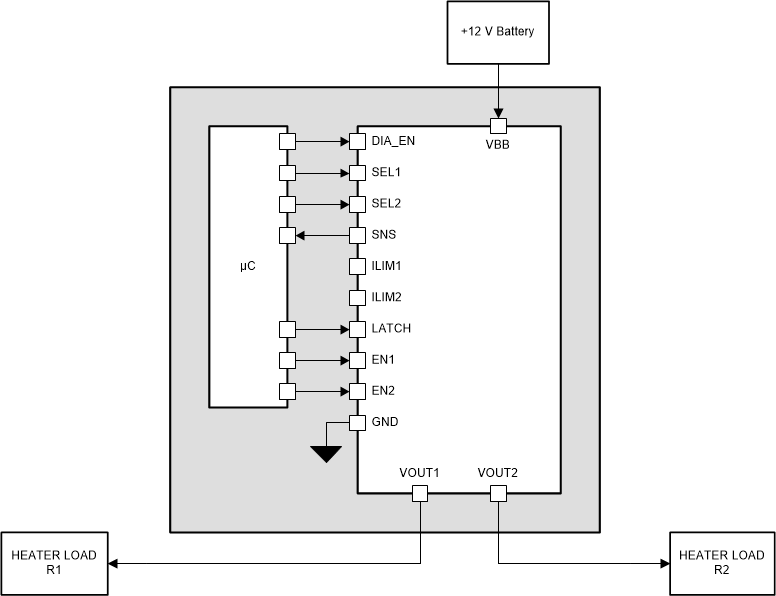JAJSHA7C February 2018 – February 2020 TPS2HB16-Q1
PRODUCTION DATA.
- 1 特長
- 2 アプリケーション
- 3 概要
- 4 改訂履歴
- 5 Device Comparison Table
- 6 Pin Configuration and Functions
- 7 Specifications
- 8 Parameter Measurement Information
-
9 Detailed Description
- 9.1 Overview
- 9.2 Functional Block Diagram
- 9.3
Feature Description
- 9.3.1 Protection Mechanisms
- 9.3.2 Fault Event – Timing Diagrams - Version F
- 9.3.3 Diagnostic Mechanisms
- 9.4 Device Functional Modes
- 10Application and Implementation
- 11Power Supply Recommendations
- 12Layout
- 13デバイスおよびドキュメントのサポート
- 14メカニカル、パッケージ、および注文情報
パッケージ・オプション
メカニカル・データ(パッケージ|ピン)
- PWP|16
サーマルパッド・メカニカル・データ
- PWP|16
発注情報
10.3 Typical Application
This application example demonstrates how the TPS2HB16-Q1 device can be used to power resistive heater loads in automotive seats. In this example, we consider dual heater loads that are powered independently by the two channels of the device. A dual-channel device is the ideal solution as it will yield a smaller solution size relative to two single-channel devices.
 Figure 52. Block Diagram for Powering Dual Heater Loads
Figure 52. Block Diagram for Powering Dual Heater Loads